MINOAS
- Home
- MINOAS
MINOAS - DAY 3
MINOAS Workshop – Day 3 at ICS-FORTH
The third and final day of the MINOAS Workshop (Machine Intelligence for iNverse imaging, Observation Analysis and Sensing) at ICS-FORTH concluded with two distinguished keynote lectures that highlighted both the depth and future potential of research in machine learning, inverse problems, and imaging sciences.
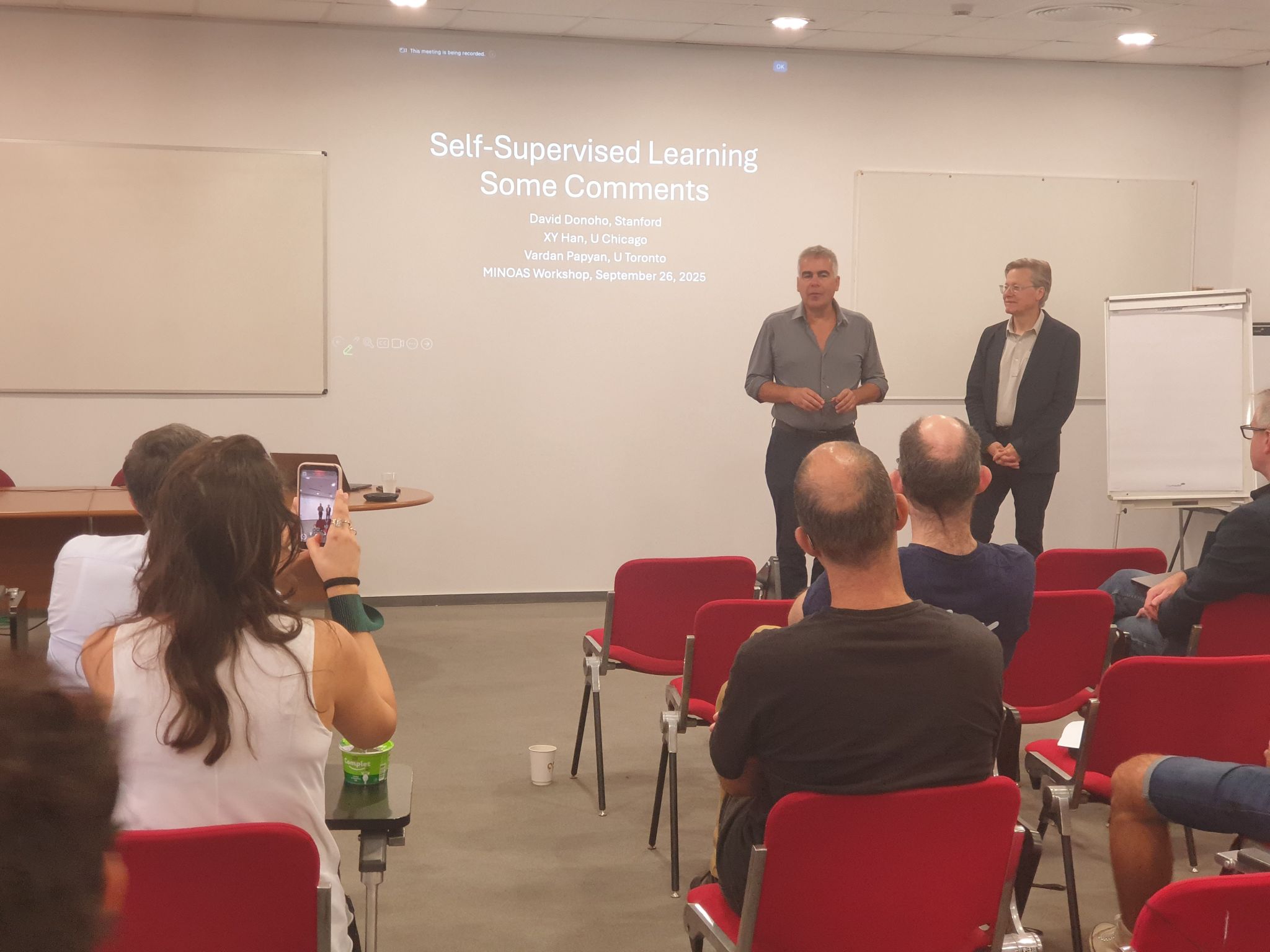
|
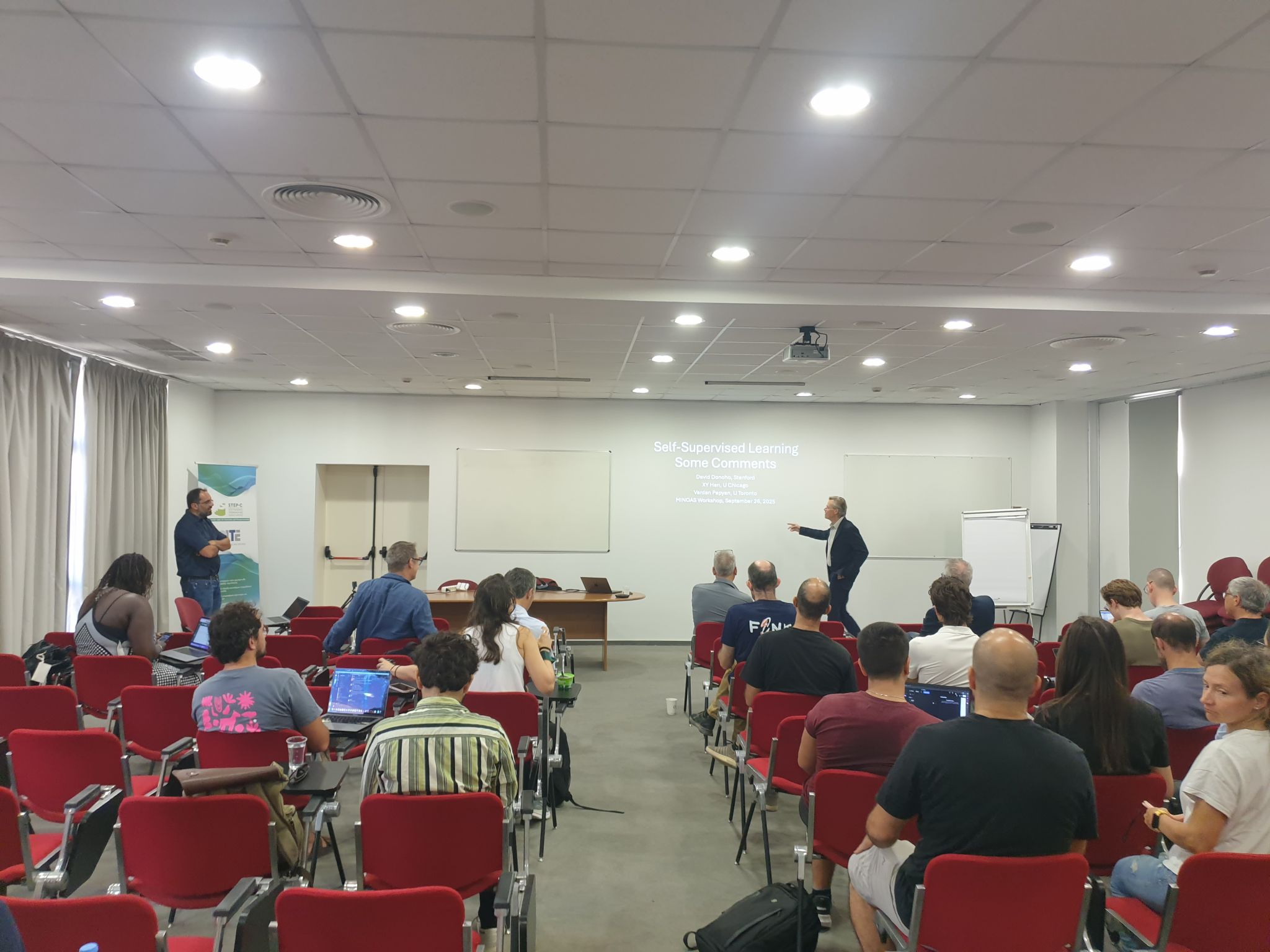
|
The day began with a thought-provoking presentation by Prof. David Donoho (Stanford University, USA), a world-leading figure in modern statistics and data science. His keynote, “Self-Supervised Learning — Can One Really Do Away with Data Labeling?”, explored one of the most debated topics in contemporary artificial intelligence: the possibility of training models effectively without relying on vast amounts of annotated data. Prof. Donoho discussed the mathematical foundations of self-supervised learning, examined its potential benefits, and critically reflected on the limits of current approaches. The talk prompted stimulating discussion among participants, underscoring the importance of bridging rigorous mathematical analysis with practical advances in AI.
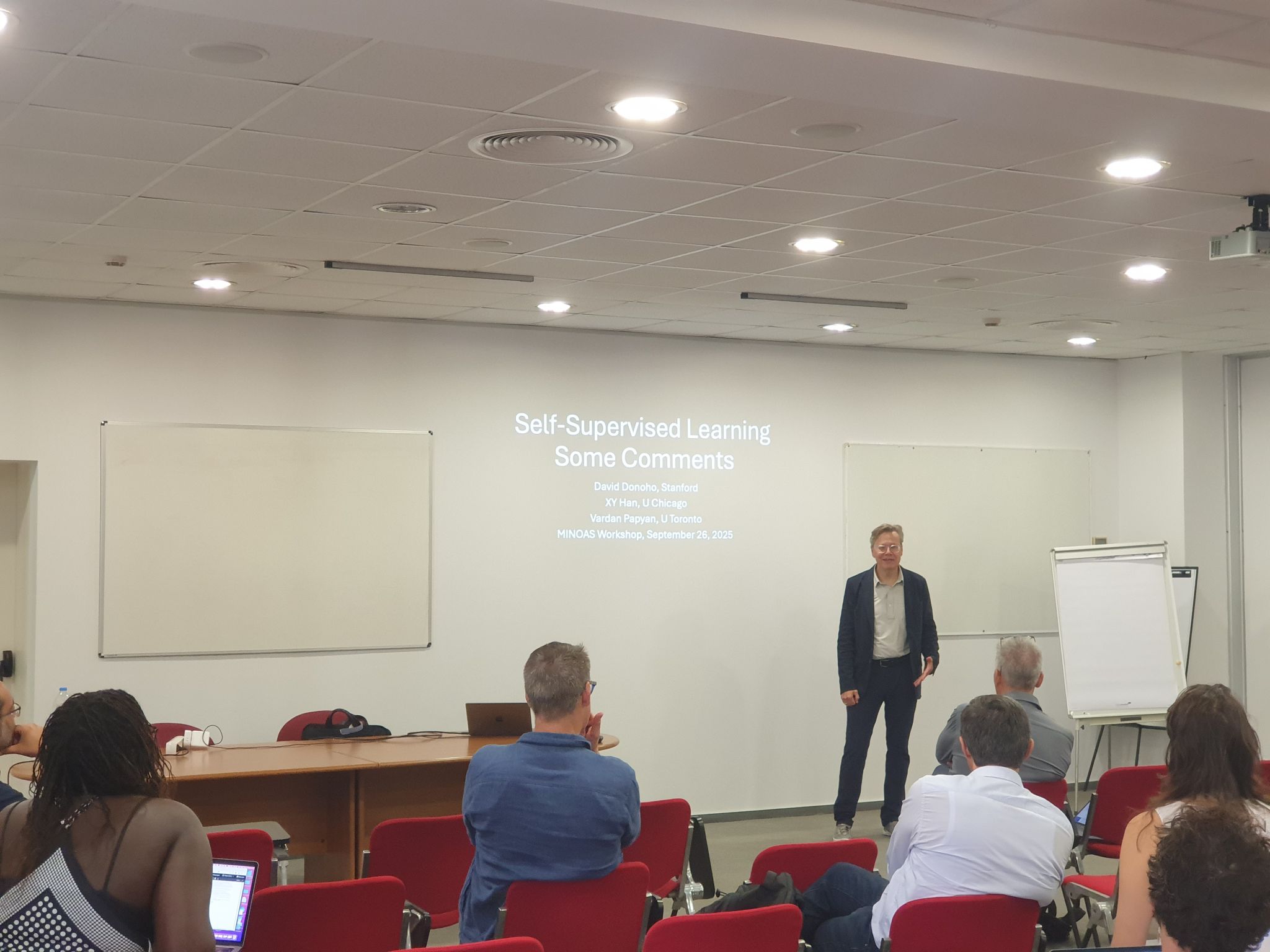
|

|
Following this, Prof. Yves Wiaux (Heriot-Watt University, UK), head of the BASP Laboratory and the ISSS Institute, delivered the keynote “The R2D2 deep neural network series paradigm for robust ultra-fast precision imaging in radio astronomy”. His lecture showcased how deep learning architectures can be designed to meet the demanding requirements of modern astrophysics, where both speed and precision are critical. By presenting the R2D2 paradigm, Prof. Wiaux illustrated how methodological innovation in neural networks can drive significant progress in ultra-high-dimensional and computationally intensive imaging tasks, such as those required in next-generation radio telescopes.
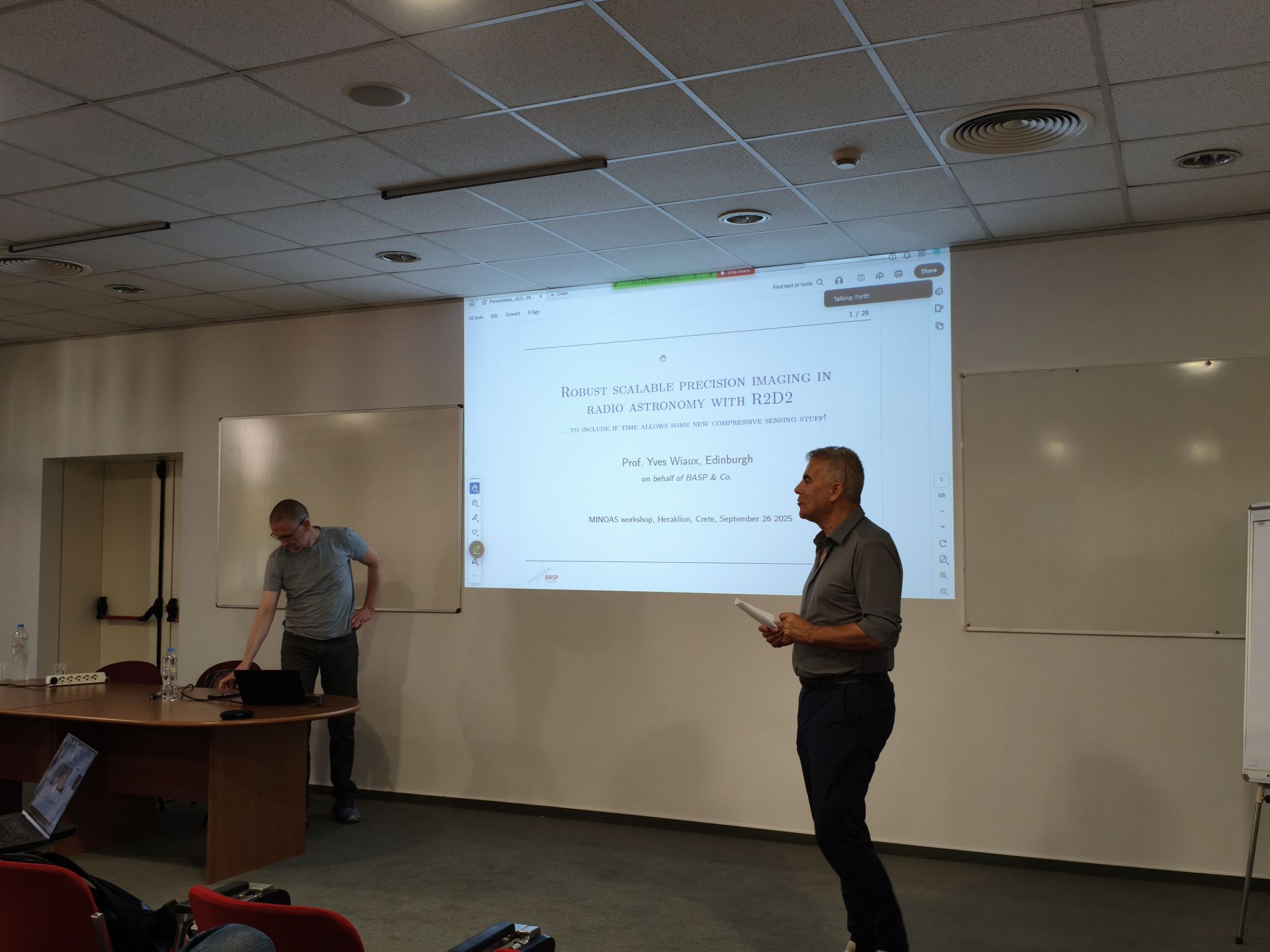
|
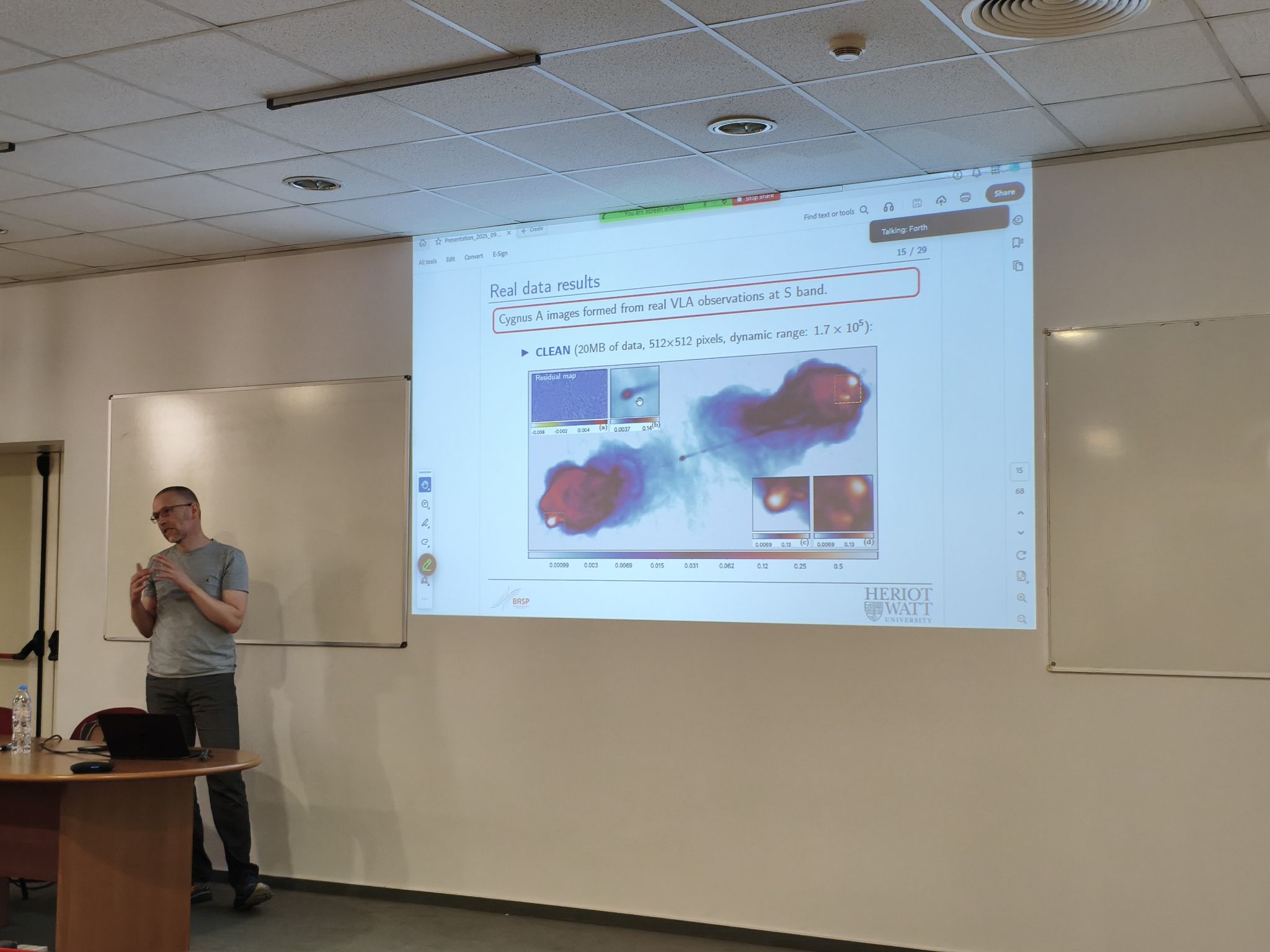
|
